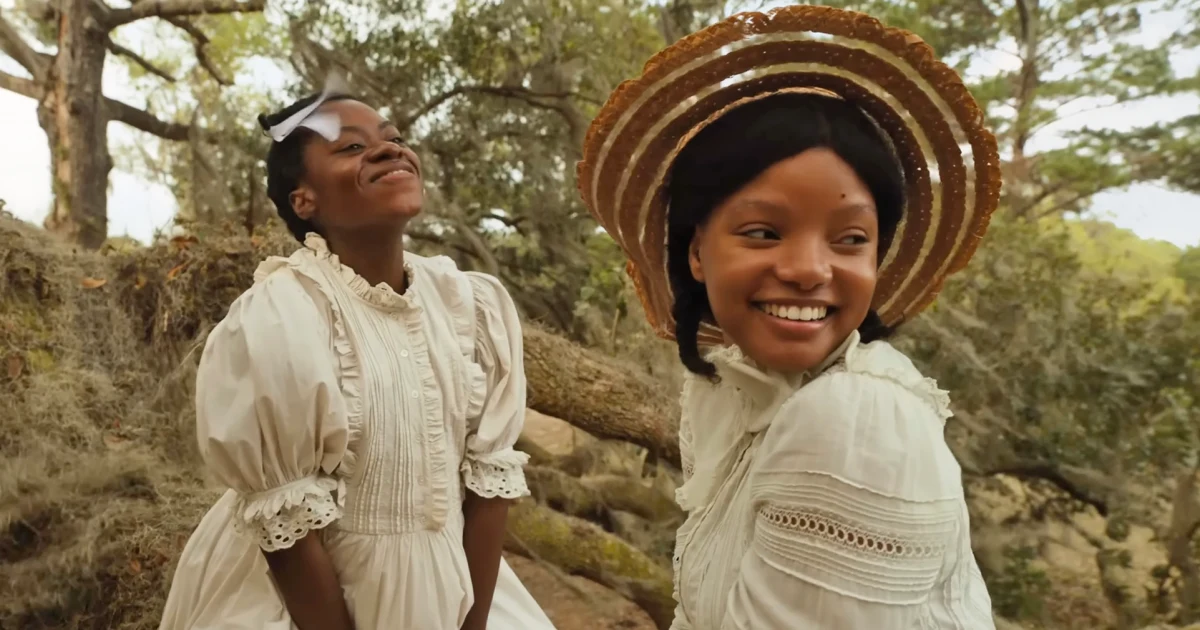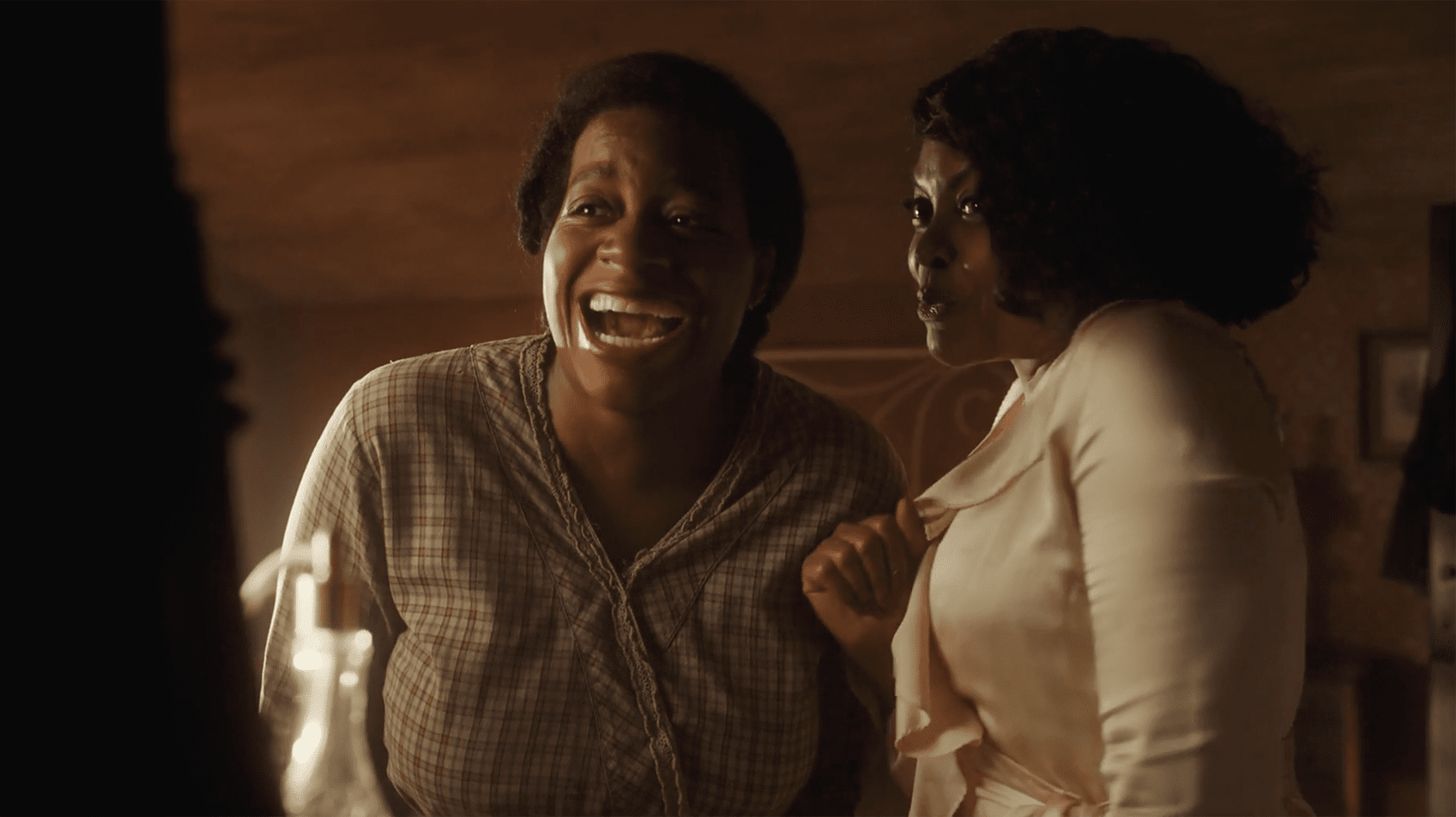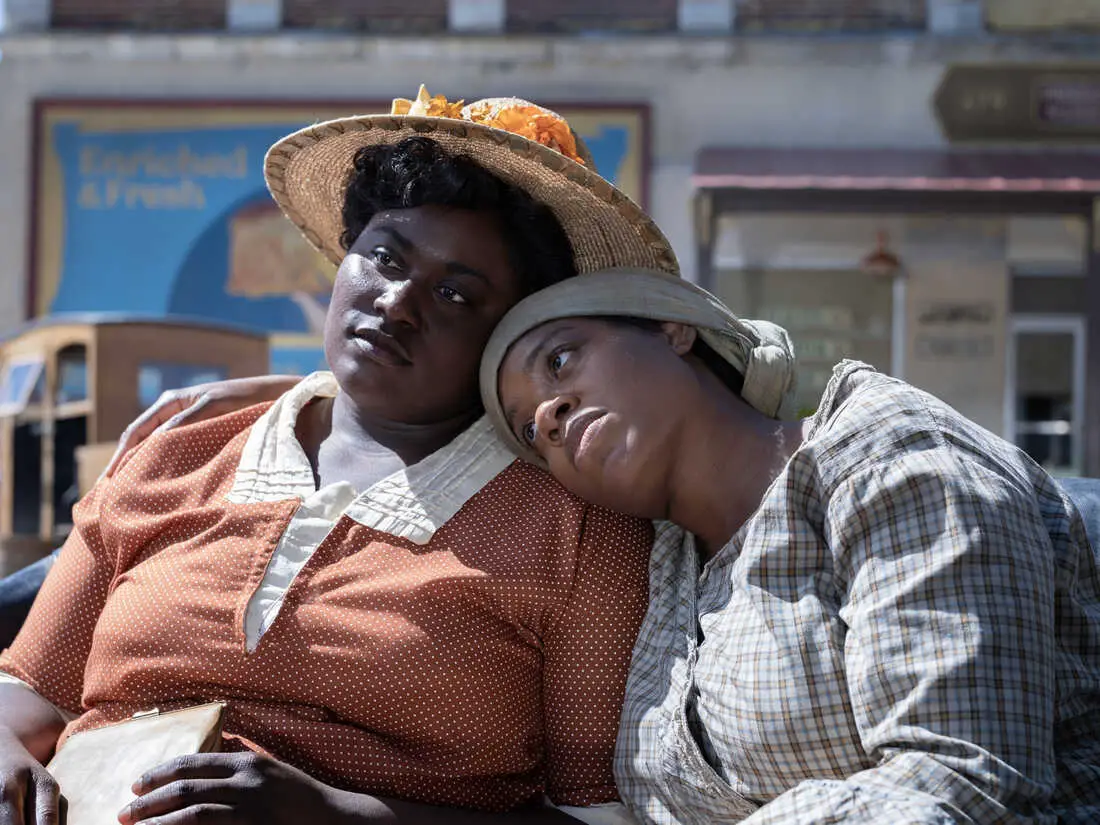Blitz Bazawule’s version of The Color Purple is operatic in its delivery; emotions are so big they explode from characters into song. It is a film made up of whole notes; every scene devolves into a barn burner, overwhelming the nuances and little moments. The theatricality is so big that when emotions are expressed not through song, they seem almost too hysterical.
The Broadway musical is based on Alice Walker’s 1982 novel. Bazawule’s musical is based on the Broadway show and 1985 movie directed by Steven Spielberg. Adapted for the screen, Marcus Gardley’s adaptation of Brenda Russell, Allee Willis, Stephen Bray, and Marsha Norman’s book and script hits all the major beats but, at times, feels like a greatest hits album. Gardley’s script is effective, working with Bazawule’s exquisite old-school musical direction, where reality and song dance together amongst the clouds and through dreams. The Color Purple, while flawed, nevertheless makes your toes tap, and your spirit soar.

Set in the Deep South during the early 1900s, Bazawule and Gardley follows Celie (Fantasia Barrino) as she struggles to survive her abusive husband, Mister (Colman Domingo), and the world around her. Being based on a Broadway play allows Bazawule to play with space and time, making The Color Purple more ecstatic and expressive visually. But what softens the blows of Gardley’s script is how he and Bazawule substitute the raw truth for the poetic implication, such as the rape scene between Mister and Celie.
Being a musical, showing the act would dampen the underlining force of nature’s exaltation of the stage. But Bazawule and Gardley fail to show how this affects Barrino’s Celie. The abuse by Mister, on the other hand, is sporadic; it is both shown and implied, allowing an atmosphere of anticipatory dread to spread over Celie’s time in the house. Barrino is a powerhouse performer, but there are times when she visibly struggles to bring Celie’s internal struggle to life. Granted, it is only noticeable when she is forced to act next to the likes of Domingo, Brooks, and Henson; she holds her own, but barely.
The Color Purple suffers a malady in which the cast is uniformly dazzling, but the chemistry between them never really sizzles. The biggest instance is between Celie and Shug Avery (Taraji P. Henson). Barrino’s rendition of “Dear God-Shug” is a bluesy realization of one woman’s romantic feelings for another woman. Bazawule Dan Lusten’s camera explores the psychological landscape of Barrino’s Celie, which is far more evocative and stirring than the kiss and implied sex scene between the two. Barrino and Henson have chemistry, but it is hardly the chemistry of lovers, more sisters.
I’m not arguing for explicitness so much as commenting on how the yearning was so effectively visualized that the depiction of their feelings feels muted and passionless. Again, the chemistry is there, but Bazawule and Lausten do not effectively display it. It is a curious artifact of the modern era in which the audience is more comfortable being told characters are queer but less so in experiencing the actual feelings of one.
It becomes noticeable when compared to how Phylicia Pearl Mpasi plays young Celie. Unlike her sister, Nettie (Halle Bailey), Celie is naive and trusting. Netting is smart and world-weary and, as she is often told, prettier than her Celie. Mpasi allows us to see the wounds of her Father’s words in how she walks and stands. Barrino’s older Celei shows how years of societal and domestic abuse have left Celie a hollowed-out being.

Still, it’s a minor hiccup, considering Henson feels like a fireball falling into a pool of kerosene. Her Shug Avery wrestles the focus away from Barrino as the indomitable and sensual blues singer who refuses the will of both men and the world around her.
Shug’s only rival is Danielle Brooks as Sofia, whose brashness is both an inspiration to Celia and also the downfall of Sofia. That downfall feels so stark and tragic if for no other reason than because it is the first and only real-time in which white people factor into The Color Purple, and it’s a jarring and horrifying consequence.
Brooks and Henson don’t hold a candle to Barrino’s voice. Still, they are better actors, highlighting that while Barrino is scorching the songsheet with her vocals in songs like “H— No!” and showstopping “I’m Here,” whatever issues you may have for her acting are all but eradicated by her soulful renditions. But Brooks runs circles around almost everyone else, as her Sofia feels larger than life but also lived in.
Lausten, who shot the abysmal Proud Mary in which most of the Black cast vanished into the shadows, seems to be making a mea culpa with The Color Purple. He and Bazawule plaster over Gadrley’s sporadic script with a breadth of visual imagination that harkens back to Bugsby Berkley and Vincent Minnelli as the characters dance and belt out numbers enmeshed not in sets but in dreamscapes. Even the numbers rooted in reality, such as Corey Hawkin’s “Workin,” have life and imagination, putting anything we saw in Wonka to shame.
More importantly, Lausten and Bazawule have found a way to make the colors in the musical sequences of The Color Purple feel like something ripped from a Technicolor film. The colors in the film have richness and a texture that highlights the scope of the emotions being expressed. This starkly contrasts the reality surrounding Celie of drab browns with tiny flourishes whenever Sofia or Shug comes around.

Weaving through all this is Domingo’s larger-than-life Mister—an angry, vile, small-hearted, insecure monster of a man. Gardley’s script has a redemption arc; had anyone but Domingo played him, the transformation might not have been believable. Domingo is so good you almost forget he hardly sings at all.
Bazawule’s The Color Purple is a work of exalted rage—an ebullient surrealism with a heart of darkness beating underneath it. Sprawling over decades, it is a tale of sisterhood and community so rapturous you’d have to have a heart of stone not to be moved, even a little.
Images courtesy of Warner Bros. Pictures
Have strong thoughts about this piece you need to share? Or maybe there’s something else on your mind you’re wanting to talk about with fellow Fandomentals? Head on over to our Community server to join in the conversation!

